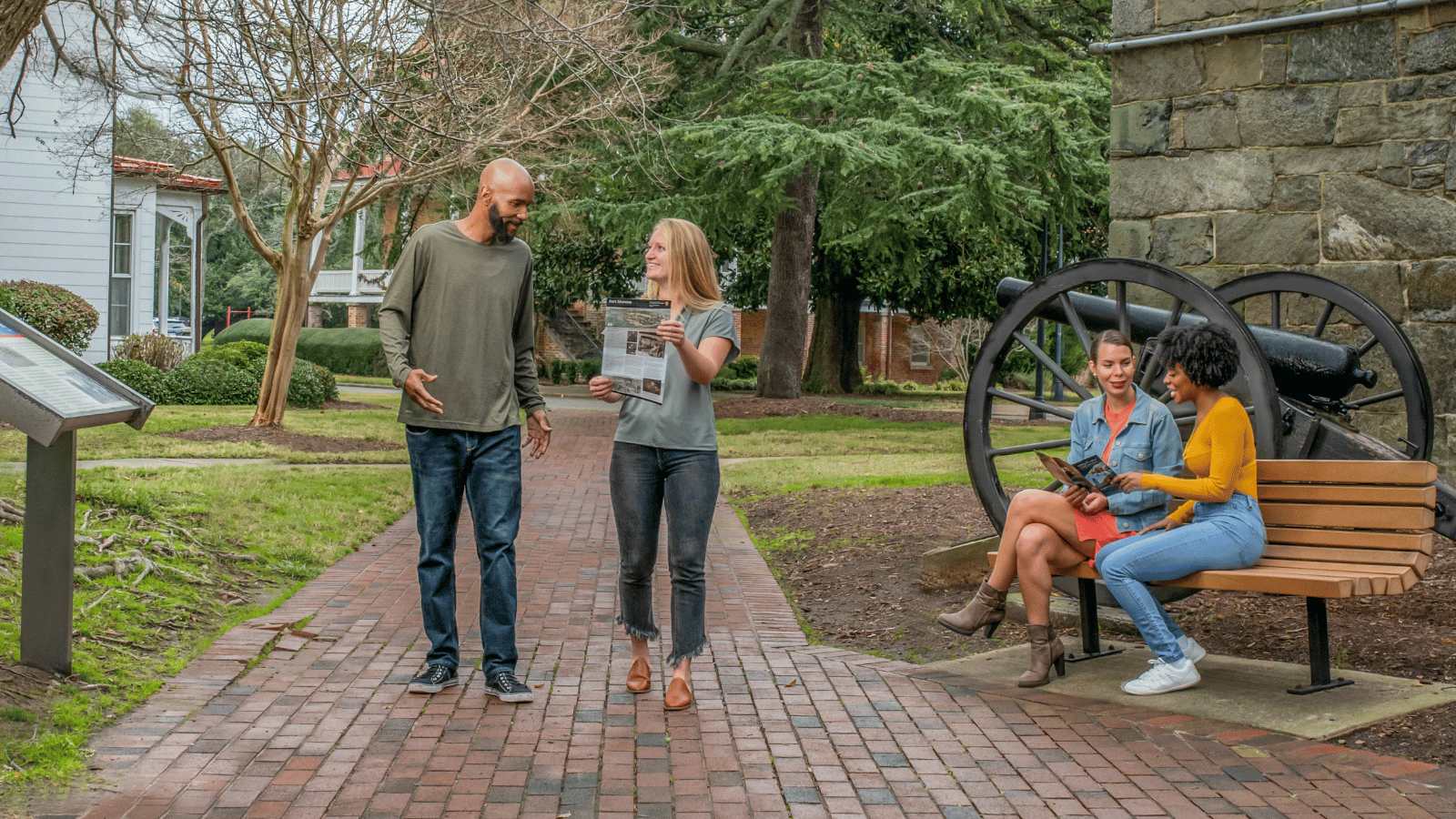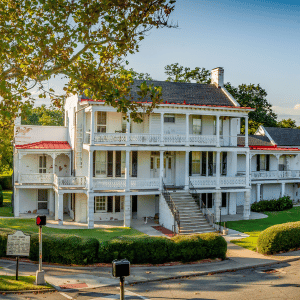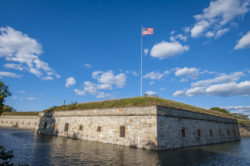
Hampton’s Civil War Trails: Follow The Road To Freedom
The American Civil War descended upon Hampton with a blaze of historic firsts. Hampton’s location near Fort Monroe placed it in harm’s way at the beginning of the Civil War, resulting in the burning of Hampton on August 7, 1861. The fort and buildings that survived the tragic burning are witnesses to the great changes that the Civil War and Reconstruction brought to our nation.
Throughout the Civil War, Hampton played a large role in the road to freedom for enslaved people and the 1862 Peninsula Campaign. These two historic moments have been crafted into Civil War Trails for visitors to explore throughout Virginia. Begin your Trail tour in Hampton as you visit Hampton’s 14 Civil War Trail sites.
1862 Peninsula Campaign Trail
The 1862 Peninsula Campaign is one of the Civil War’s most pivotal events. During this campaign, the Union Army created a plan to attack Richmond by way of the Peninsula. After the successful campaign, Fort Monroe became a major Union base throughout the remainder of the Civil War.

While exploring Fort Monroe, make sure to visit Old Quarters No. 1, where President Lincoln planned the attack to capture Norfolk and Portsmouth during the Peninsula Campaign.
The 1862 Peninsula Campaign Trail in Hampton will also take you to historic markers at St. John’s Church, Big Bethel Park, and Downtown Hampton, where you will learn about the 1861 burning of Hampton.
Road to Freedom Trail
The Road to Freedom Trail shares the African American experience in Civil War-era Virginia. It unleashes the power of both perspective and place and introduces historical figures that have been given little voice until now.
In Hampton, you will visit Fort Monroe, Emancipation Oak, Big Bethel Park, and the resting place of Mary Peake, who started a school for formerly enslaved children.

At Fort Monroe, also known as Freedom Fortress, you will learn the story of Gen. Ben Butler, contraband camps, and the African American refugee experience.
Continue your journey through Fort Monroe to the Casemate Museum. Here you will find the cell where former Confederate president Jefferson Davis was held prisoner in 1865.

After visiting Fort Monroe, drive over to the Emancipation Oak and stand around the tree where the first Southern reading of the Emancipation Proclamation was held.
Complete Hampton’s section of the Road to Freedom trail by learning about the Battle of Big Bethel. The Civil War’s first land battle.
Hampton Trip Tips for History Buffs:
Ready to explore the Civil War Trails in Hampton? Use these resources to help plan your historic trip:
- Download the Road to Freedom Trail app ahead of time
- See a full list of Historical Markers in Hampton here for more stops to visit
- Bring your headphones for a self-guided cell phone tour
- 400 Years Forward: Join us on the 400 Years Forward Tour, as we explore Hampton, Virginia’s Black history and culture from 1619 to today. Visit 11 locations in Hampton while listening to stories from the descendants and keepers of this history.
- Aberdeen Gardens: In this tour you will learn a lot about this small neighborhood that has made such a big impact. Get ready for a history lesson on this historic neighborhood and get a first hand glance at how the homes were set up during the 1950s.
- Fort Monroe: The largest stone fortification ever built in the United States and known as “Freedom Fortress” to the thousands of enslaved Africans who escaped and found refuge at this Union-held fort during the Civil War.
- Prefer paper? Head to the Fort Monroe Visitor & Education Center and request a copy of the walking tour
- Plan to stop at the Casemate Museum (in Fort Monroe) or Hampton History Museum gift shop as both carry a variety of hard-to-find books on local history.
Start planning your Civil War Trail tour today! Give us a call at 800.800.2202 and we’d be happy to mail you a copy of the above trail maps along with our Visitor Guide. If you’re interested in black history, also ask for the Family Tree brochure.